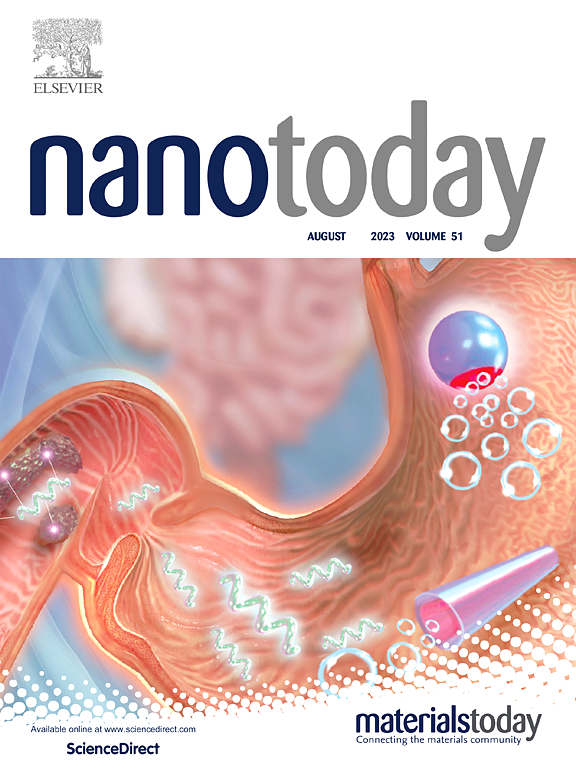水凝胶增强了细胞外囊泡的分离、检测和递送
IF 10.9
1区 材料科学
Q1 CHEMISTRY, MULTIDISCIPLINARY
引用次数: 0
摘要
细胞外囊泡(EVs)是一种双层磷脂结构,能够将多种生物分子从亲本细胞转运到邻近细胞或远处器官,在疾病诊断和治疗中具有显着的潜力。然而,它们在体液中的低密度、所含生物标志物的低浓度以及体内循环速度快,极大地阻碍了它们的高效分离、准确检测和控制给药。在过去的十年中,越来越多的研究发现,具有可调节结构、可定制功能以及理想的生物相容性和生物降解性的三维多孔水凝胶可以为解决这些障碍提供一个强大的平台。本文综述了近年来利用天然和合成水凝胶辅助电动汽车的分离、检测和递送的研究进展,重点介绍了水凝胶的相关性质。此外,还审议了相关的挑战,并讨论了正在出现的可能的机会。全面了解水凝胶对电动汽车的分离、检测和递送的作用,将促进未来基于电动汽车的疾病诊断和治疗集成平台的发展。本文章由计算机程序翻译,如有差异,请以英文原文为准。
Hydrogel empowered extracellular vesicles isolation, detection, and delivery
Extracellular vesicles (EVs), bilayered phospholipid structures capable of transporting diverse biomolecules from parent cells to neighboring cells or distant organs, exhibit remarkable potential in disease diagnosis and treatment. However, their efficient isolation, accurate detection, and controlled delivery have been greatly hindered by their low density in body fluid, low concentration of containing biomarkers, as well as rapid circulation rate in vivo, respectively. Over the past decade, an expanding number of studies have found that the three-dimensional porous hydrogels with adjustable structures, customizable functions, as well as desirable biocompatibility and biodegradability could provide a powerful platform for tackling these obstacles. Herein, this review summarized the recent progress in utilizing natural and synthetic hydrogels to assist in the isolation, detection, and delivery of EVs, with an emphasis on the relevant properties of hydrogels. In addition, the associated challenges were considered and the emerging possible opportunities were discussed. The comprehensive understanding of the hydrogel empowered isolation, detection, and delivery of EVs would promote the future development of EV-based integrating platforms for disease diagnosis and treatment.
求助全文
通过发布文献求助,成功后即可免费获取论文全文。
去求助
来源期刊

Nano Today
工程技术-材料科学:综合
CiteScore
21.50
自引率
3.40%
发文量
305
审稿时长
40 days
期刊介绍:
Nano Today is a journal dedicated to publishing influential and innovative work in the field of nanoscience and technology. It covers a wide range of subject areas including biomaterials, materials chemistry, materials science, chemistry, bioengineering, biochemistry, genetics and molecular biology, engineering, and nanotechnology. The journal considers articles that inform readers about the latest research, breakthroughs, and topical issues in these fields. It provides comprehensive coverage through a mixture of peer-reviewed articles, research news, and information on key developments. Nano Today is abstracted and indexed in Science Citation Index, Ei Compendex, Embase, Scopus, and INSPEC.
 求助内容:
求助内容: 应助结果提醒方式:
应助结果提醒方式:


